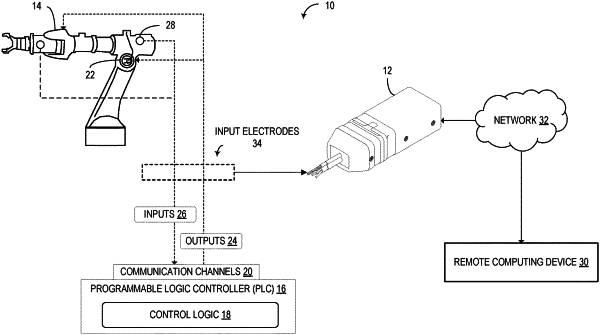| CPC G05B 19/05 (2013.01) [G06N 3/08 (2013.01); G05B 2219/13111 (2013.01)] | 20 Claims |

|
1. An edge computing device, comprising:
a plurality of input electrodes that are communicatively coupled to one or more communication channels of a programmable logic controller that implements control logic to control a controlled device, and
a processor configured to:
at a training time:
receive signals via the plurality of input electrodes;
detect inputs to the one or more communication channels and outputs from the one or more communication channels of the programmable logic controller;
generate a set of training data based on the detected inputs and outputs of the programmable logic controller, wherein the set of training data includes a plurality of training data pairs, and wherein each training data pair includes,
an input vector based at least on one or more of the detected inputs to the one or more communication channels of the programmable logic controller, and
an output vector based at least on one or more of the detected outputs from the one or more communication channels of the programmable logic controller; and
train an artificial intelligence model using the generated set of training data to emulate the control logic of the programmable logic controller and thereby generate a run-time output configured to actuate the controlled device responsive to a run-time input;
at a run-time, emulate the control logic of the programmable logic controller using the trained artificial intelligence model by:
receiving the run-time input;
inputting the run-time input into the trained artificial intelligence model to thereby generate a run-time output using the emulated control logic; and
using the run-time output to actuate the controlled device responsive to the run-time input while the programmable logic controller is decoupled from the controlled device.
|